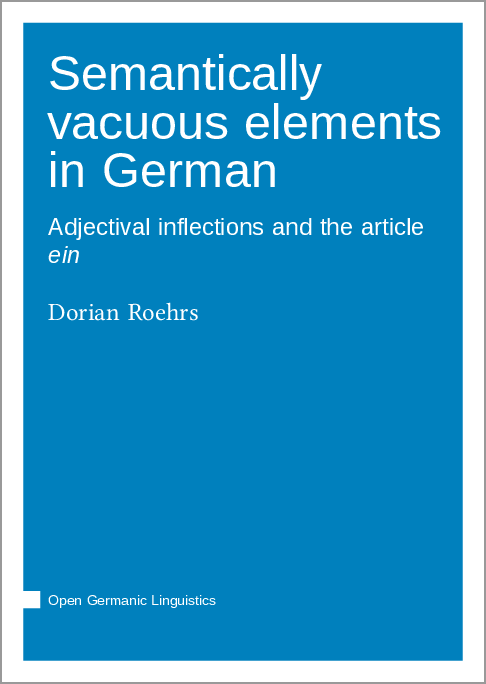We log anonymous usage statistics. Please read the privacy information for details.
Semantically vacuous elements in German: Adjectival inflections and the article ein
Synopsis
This book investigates adjectival inflections and the article ein in many different contexts in German including in various non-canonical contexts. It pursues two goals. On the one hand, it strives to provide a more comprehensive description and account of adjectival inflections and the article ein. This includes an examination of the interaction of these two elements. On the other hand, it seeks to identify similarities between these different types of elements to address certain theoretical questions. It is argued that adjectival inflections are not a reflex of (in-)definiteness, (non-)restrictiveness of the interpretation of adjectives, or referentiality; ein is argued not to be a reflex of indefiniteness, emotiveness, or singular number/countability. Furthermore, it is demonstrated that these two elements indicate abstract structural differences: adjectival inflections in the higher portion of the noun phrase, ein in the lower part of the noun phrase. In addition, both types of elements make certain abstract elements visible: adjectival inflections make features for case, number, and gender visible; ein supports overt operators or flags the presence of covert ones. Overall, it is concluded that these two types of elements have neither semantics of their own nor do they make such features visible – they are semantically vacuous.



